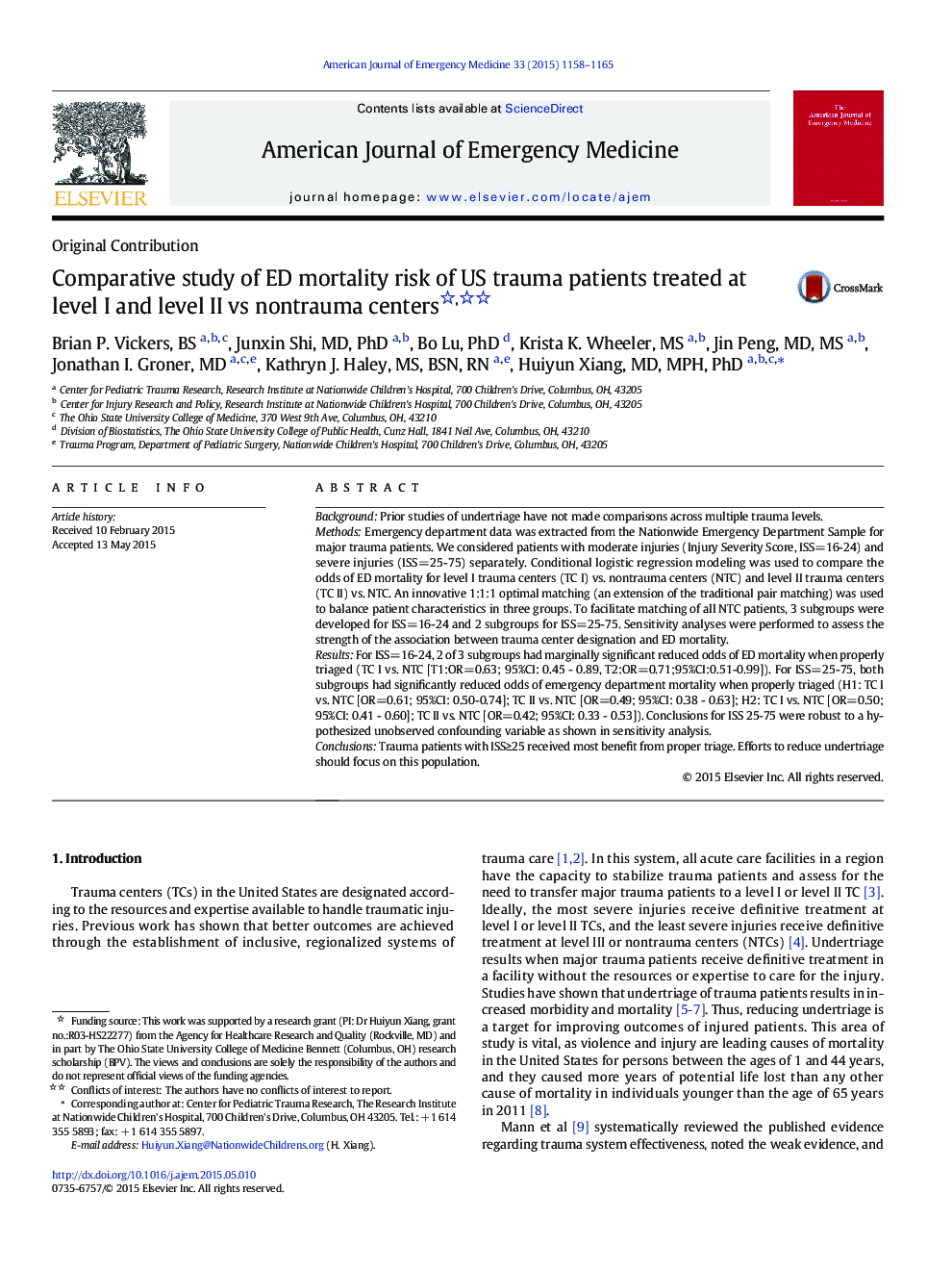| Article ID | Journal | Published Year | Pages | File Type |
|---|---|---|---|---|
| 3223887 | The American Journal of Emergency Medicine | 2015 | 8 Pages |
BackgroundPrior studies of undertriage have not made comparisons across multiple trauma levels.MethodsEmergency department data was extracted from the Nationwide Emergency Department Sample for major trauma patients. We considered patients with moderate injuries (Injury Severity Score, ISS=16-24) and severe injuries (ISS=25-75) separately. Conditional logistic regression modeling was used to compare the odds of ED mortality for level I trauma centers (TC I) vs. nontrauma centers (NTC) and level II trauma centers (TC II) vs. NTC. An innovative 1:1:1 optimal matching (an extension of the traditional pair matching) was used to balance patient characteristics in three groups. To facilitate matching of all NTC patients, 3 subgroups were developed for ISS=16-24 and 2 subgroups for ISS=25-75. Sensitivity analyses were performed to assess the strength of the association between trauma center designation and ED mortality.ResultsFor ISS=16-24, 2 of 3 subgroups had marginally significant reduced odds of ED mortality when properly triaged (TC I vs. NTC [T1:OR=0.63; 95%CI: 0.45 - 0.89, T2:OR=0.71;95%CI:0.51-0.99]). For ISS=25-75, both subgroups had significantly reduced odds of emergency department mortality when properly triaged (H1: TC I vs. NTC [OR=0.61; 95%CI: 0.50-0.74]; TC II vs. NTC [OR=0.49; 95%CI: 0.38 - 0.63]; H2: TC I vs. NTC [OR=0.50; 95%CI: 0.41 - 0.60]; TC II vs. NTC [OR=0.42; 95%CI: 0.33 - 0.53]). Conclusions for ISS 25-75 were robust to a hypothesized unobserved confounding variable as shown in sensitivity analysis.ConclusionsTrauma patients with ISS≥25 received most benefit from proper triage. Efforts to reduce undertriage should focus on this population.
